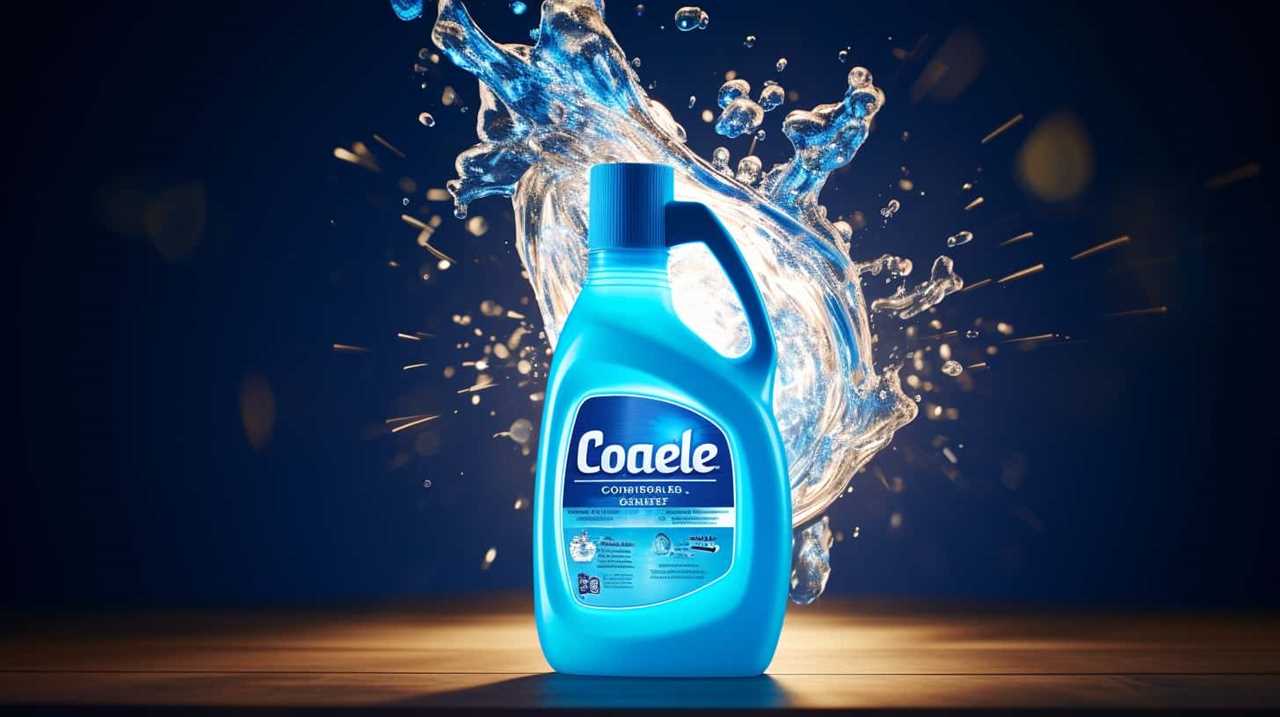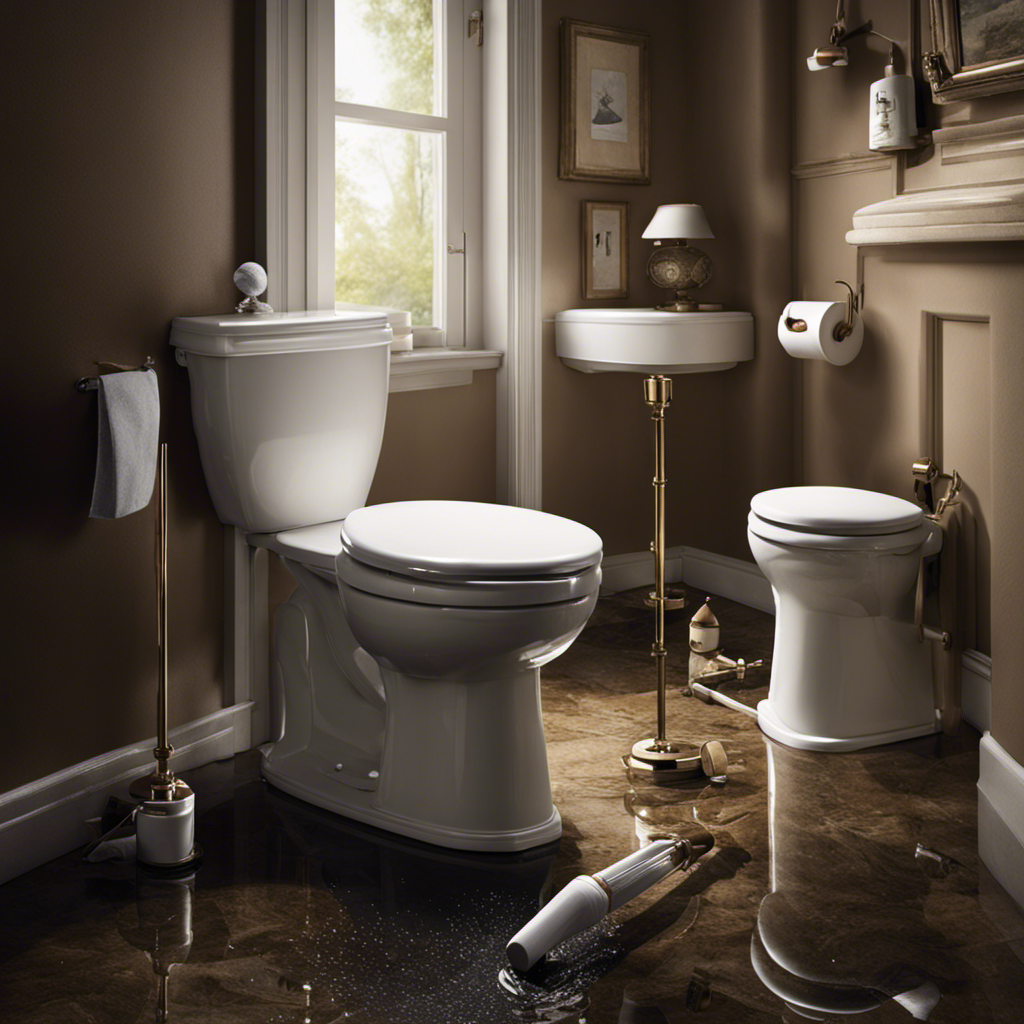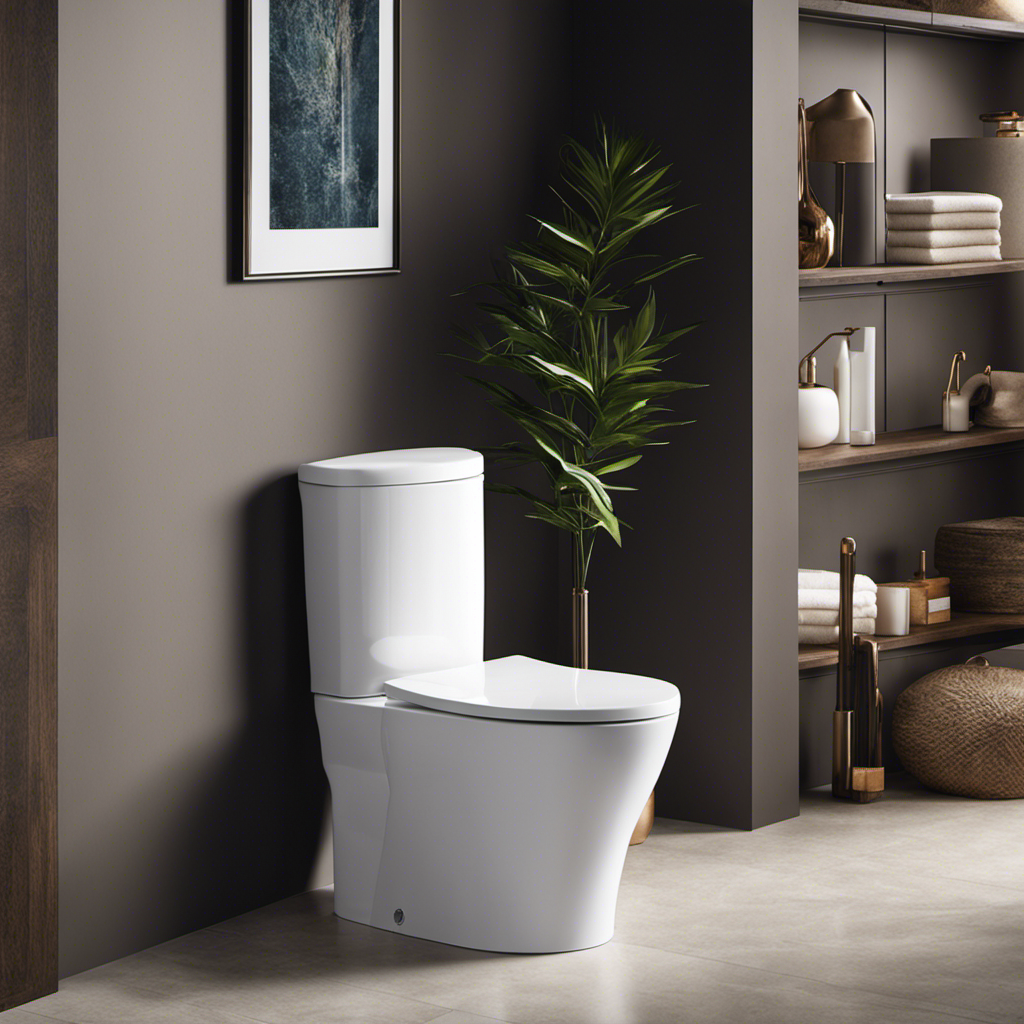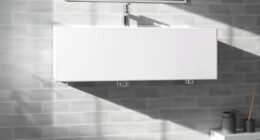Have you ever questioned if those wipes labeled as ‘flushable’ can actually be disposed of in the toilet without causing any issues?
Well, let us shed some light on this issue. In this article, we will delve into the truth behind flushable wipes, their impact on plumbing systems, and the environmental concerns surrounding them.
Get ready to master the knowledge about whether or not you can safely flush flushable wipes down the toilet.
Key Takeaways
- Manufacturers use misleading marketing tactics to promote flushable wipes as safe for flushing.
- Flushable wipes are not truly flushable and can cause blockages in plumbing systems.
- The composition of flushable wipes, including synthetic fibers and additives, affects their ability to break down and disintegrate when flushed.
- Flushing flushable wipes can result in costly repairs, environmental concerns, and burden on sewer systems.
The Truth About Flushable Wipes
We frequently encounter the misconception that flushable wipes are truly flushable. This misconception arises partly due to the marketing tactics employed by flushable wipe manufacturers and the resulting consumer misconceptions.

Flushable wipe manufacturers often use terms like ‘flushable’ and ‘sewer safe’ to promote their products, leading consumers to believe that these wipes can be safely flushed down the toilet without causing any issues. However, the truth is that flushable wipes don’t break down as easily as toilet paper, leading to blockages in plumbing systems and causing significant damage to sewer infrastructure.
Studies have shown that these wipes can survive intact even after several hours of being submerged in water. Therefore, it’s crucial for consumers to understand that despite the marketing claims, flushable wipes aren’t truly flushable and should be disposed of in the trash to avoid costly plumbing problems.
Understanding the Composition of Flushable Wipes
Flushable wipes are made from a combination of synthetic fibers and natural materials. The composition of flushable wipes plays a crucial role in understanding their disposal methods.
These wipes typically consist of cellulose fibers, which are derived from wood pulp, and synthetic fibers, such as polyester or polypropylene. These materials are chosen for their durability and absorbency. Additionally, flushable wipes may contain additives like moisturizers, fragrances, and preservatives to enhance their performance.

Understanding the composition of flushable wipes is important because it informs us about their potential impact on plumbing systems. The combination of synthetic and natural materials can affect how these wipes break down and disintegrate when flushed.
Now, let’s delve into the subsequent section to explore the impact of flushable wipes on plumbing systems.
The Impact of Flushable Wipes on Plumbing Systems
Although flushable wipes are marketed as safe for toilets, they can actually have a significant impact on plumbing systems. The convenience of flushable wipes comes at a cost, as they can cause clogging issues and result in costly repairs. Unlike toilet paper, which breaks down easily in water, flushable wipes are made with materials that aren’t as easily degradable.
As a result, they can accumulate in pipes and create blockages, leading to plumbing problems. These clogs can be difficult to remove and may require professional assistance, adding to the expense. It’s important to be aware of the potential consequences of flushing flushable wipes to avoid unnecessary expenses and inconvenience.

Now, let’s explore the environmental concerns surrounding flushable wipes.
Environmental Concerns Surrounding Flushable Wipes
The environmental impact of flushable wipes is a cause for concern. While these wipes are marketed as being biodegradable, there are concerns about their actual biodegradability.
Many flushable wipes contain synthetic fibers that don’t break down easily in water or soil, leading to potential environmental harm. When flushed down the toilet, these wipes can clog pipes and cause blockages in sewer systems, leading to costly repairs.
Additionally, flushable wipes can also have a negative impact on wastewater treatment plants. The fibers in these wipes can accumulate in the treatment process, reducing the efficiency of the plant and potentially causing equipment damage.

As a result, wastewater treatment plants are often burdened with the task of removing these non-biodegradable wipes from the system, which can be both time-consuming and expensive.
It’s crucial to consider these environmental concerns before using and disposing of flushable wipes.
Alternatives to Flushing Flushable Wipes
We have found several effective alternatives to flushing flushable wipes down the toilet.
When it comes to disposal options for flushable wipes, one eco-friendly alternative is to dispose of them in the trash. Simply place used wipes in a sealed bag or container before throwing them away.

Another option is to use reusable cloth wipes instead. These can be washed and reused multiple times, reducing waste and saving money in the long run.
Additionally, some people choose to use bidets or wet toilet paper for a more sustainable alternative to flushable wipes.
The benefits of using these eco-friendly alternatives include reducing the strain on sewage systems and preventing blockages in pipes.
Frequently Asked Questions
Are There Any Specific Brands of Flushable Wipes That Are More Likely to Cause Plumbing Issues?
Specific brands of flushable wipes can vary in their potential to cause plumbing issues. It is important to research and choose brands that are designed to break down easily in water to minimize the risk of clogging pipes.

Can Flushing Flushable Wipes Lead to Blockages in Septic Systems?
Flushing flushable wipes can lead to blockages in pipes and have a negative environmental impact. It’s important to understand that even though they are marketed as flushable, they can still cause issues.
Are There Any Regulations or Standards in Place for Labeling Products as "Flushable"?
Regulations impact the labeling of "flushable" products, but concerns remain regarding their environmental impact. It is important to investigate the truth behind the claims to ensure we make informed choices.
Are There Any Studies or Research Available on the Long-Term Effects of Flushable Wipes on Sewage Treatment Plants?
Long term environmental impact studies on flushable wipes and their effectiveness on sewage treatment plants are available. These studies provide technical and informative insights into the potential consequences of flushing such wipes down the toilet.
What Are Some Common Misconceptions or Myths About Flushable Wipes That People Should Be Aware Of?
Common misconceptions about flushable wipes include their actual flushability and the minimal environmental impact. However, it’s important to note that despite the label, these wipes can cause clogs and contribute to sewage system issues.

Conclusion
In conclusion, it’s clear that flushable wipes aren’t truly flushable. Despite their claims, these wipes can cause significant damage to plumbing systems, leading to costly repairs.
Additionally, the environmental impact of flushing these wipes is a cause for concern. It’s important to seek alternatives to flushing flushable wipes in order to prevent clogs and protect our environment.










